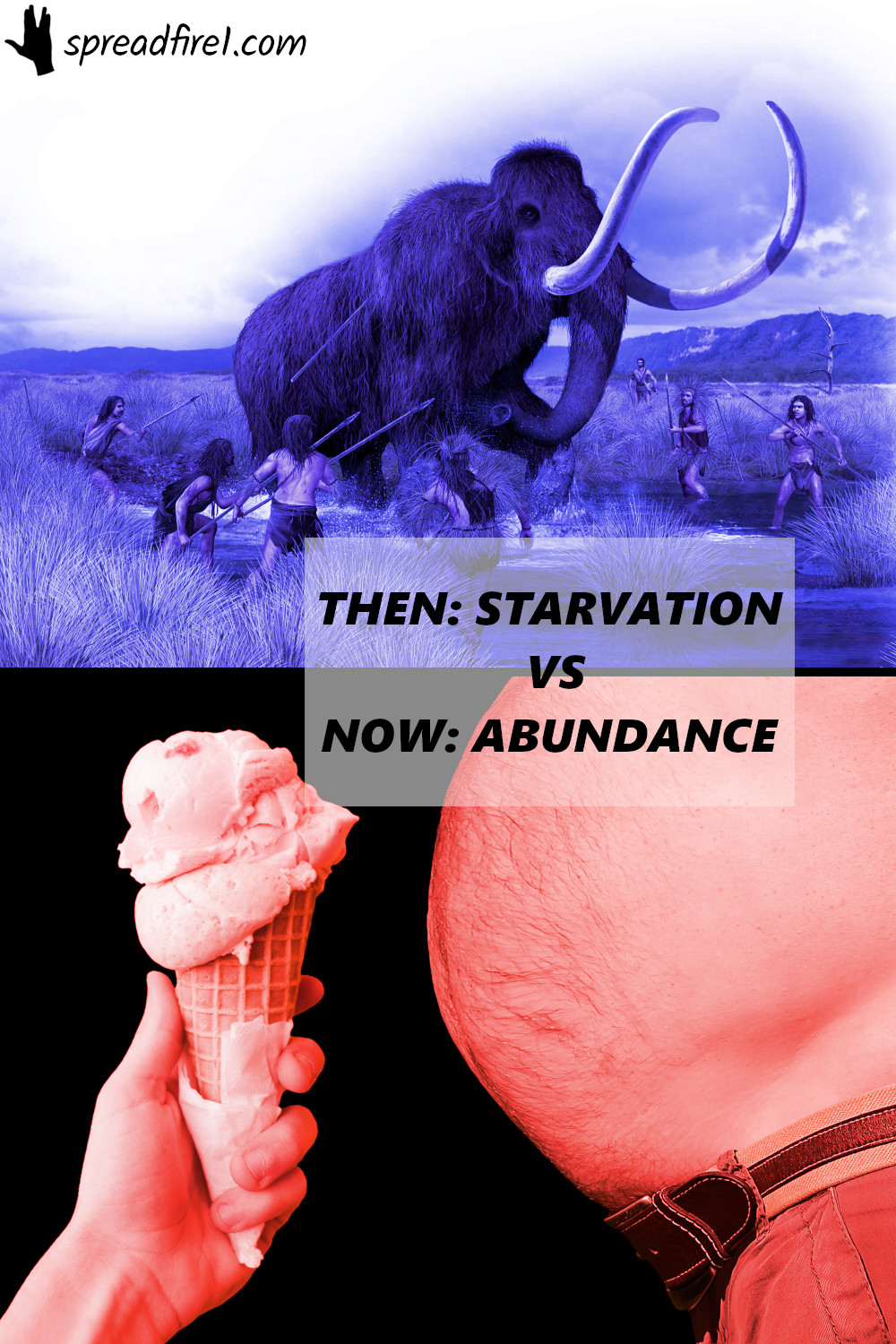|
Blogcast - listen to the audio version
|

Contents:
- The Problem
- Biological background
- Substitute bad habits with healthy habits
- Useful tools
- Conclusion and summary
Bad habits can prevent you from reaching your goals. By that logic, you can turn that around and accomplish anything you set your mind to. By implementing healthy habits into your life and your daily routine.
The Problem
Many people know vaguely WHAT they want (for example, to live a healthy, happy, fulfilled life, to be more productive, etc…), but not exactly HOW to accomplish these goals. Let’s take New Year’s resolutions for example. Common resolutions are “I want to exercise more”, lose weight, stop smoking or lose other vices, sleep right, or eat healthier. A majority of people who set New Year’s resolutions fail.
Let’s explore a few possible reasons why most New Year’s resolutions fail. Some people have unrealistic goals, some don’t keep track of their progress, and some simply forget about them. Also, making too many resolutions is sometimes a reason to fail. Those explanations seem obvious and superficial. Let’s get to the underlying cause. In my opinion, it all comes down to an intrinsic biological trait of ours…
Instant gratification vs long term benefits
Why is it so hard to do the “right” thing that benefits us the most?
Before getting to solutions, here’s an explanation for one of the problem’s possible and most likely causes.
Humans are still apes
On an evolutionary timescale, for the majority of our existence, starvation was a much bigger problem than obesity. For hunter-gatherers, it was more beneficial to fill their stomachs immediately, every time they had the chance to. In these or similar situations, the instant reward, although smaller compared to a potential delayed reward, was big enough for humans and other animals to survive.
Nowadays vs Back then
The problem we are facing nowadays exists because not enough time has passed for our bodies to adapt to a modern abundant lifestyle. Our prehistoric ancestors didn’t have the option to overeat as we do. Rather than resisting the temptation of an immediate reward in order to receive a larger or more enduring reward later, we still often follow our primitive instincts. The delayed benefit is hard to grasp for our brains. The long term reward, in that case, is being at a healthy weight, avoiding future health issues like obesity and its severe symptoms. Another illustrative analogy: Planting a walnut tree instead of the instant gratification of consuming the fruit takes foresight and patience. But it pays off thousandfold in the long run.
Of course, this applies to other behaviors than eating, as well. Anything that stimulates our brain’s reward centers. Although a much more complex topic, drug addiction as an extreme consequence also comes to mind in that context. Like in animal experiments, where rats could press a bar to get an injection of heroin directly into their brains to increase dopamine release. This can also lead to procrastination of inconvenient tasks in favor of maximizing pleasure in the current moment.

So, what to do with this knowledge. How to fight or trick our prehistoric brains?
Substitute bad habits with healthy habits
The foundation needed to reach many long-term goals in life is to build good habits and to break bad habits.
A habit is a routine of behavior that is repeated regularly and tends to occur subconsciously.
https://en.wikipedia.org/wiki/Habit
Make a behavior become second nature through repetition. Include it into your daily routine to build a habit.
Because bad habits provide some type of benefit in your life, it’s very difficult to simply eliminate them. (This is why simplistic advice like “just stop doing it” rarely works.)
https://jamesclear.com/how-to-break-a-bad-habit
Instead, you need to replace a bad habit with a new habit that provides a similar benefit.
For example, if you smoke when you get stressed, then it’s a bad plan to “just stop smoking” when that happens. Instead, you should come up with a different way to deal with stress and insert that new behavior instead of having a cigarette.
In other words, bad habits address certain needs in your life. And for that reason, it’s better to replace your bad habits with a healthier behavior that addresses that same need. If you expect yourself to simply cut out bad habits without replacing them, then you’ll have certain needs that will be unmet and it’s going to be hard to stick to a routine of “just don’t do it” for very long.
Useful tools
Here are some ways and useful tools for breaking bad habits and implementing good habits into daily life.
These “tools” are no physical instruments you can actually touch, but mental techniques you can apply in certain situations. The human mind is powerful and capable of incredible feats. The more we understand about it, the more we can use this knowledge to our advantage. We can train our minds to behave the way we want in order to achieve our goals.
Self-awareness. Be honest with yourself.
“Hi, my name is Jerry and I have a problem.”
Identify and acknowledge the problem so you can fix it.
A fault confessed is half redressed.
Which of your habits are related to or responsible for you not reaching your goal?

Set a goal
Set a big goal, like a new year’s resolution. What do you want to achieve in life? What’s your most avid desire? For example, “I want to lose weight.”.
Be as specific as possible. For example, specify like this: “I want to get to a healthy weight within 1 year.” Depending on many individual factors, this could be for example to reach a BMI below 25.
Break it down
Define micro tasks that get you to reach your macro goal.
Break the big goal down into smaller goals, e.g. lose 5 pounds a month. How to do that? I won’t go too deep into it, but for the example’s sake – simply put, consume fewer calories than you burn. Consult a nutritionist for help, if needed. Calculate how much food you need to take in, based on your caloric requirements (base level plus additional exercise). Ideally, you can identify specific food items responsible for unnecessarily high calory consumption. Easily spottable dietary errors would be for example soft drinks, fast food and sweets.
Macro – Micro
Your macro goal is unfolding into more and more micro goals. Continue this until you have actual chores you can put into your calendar. Instead of “lose weight” you now have a cumulation of smaller, more tangible goals. For example:
- every other day, work out/go for an hour-long run
- Replace sweet snacks with fruits, vegetables and nuts
- Drink water and tea instead of coke and juice
- Every time you’re feeling the urge to smoke a cigarette, do breathing exercises instead
It is important to define intermediary steps. They are achievable easier and less overwhelming to start executing. You can (and should) keep the big goal in mind as motivation. Also, that way your subconscious keeps working on achieving it. But don’t stress over immediately having to reach the finish line. It’s not only okay, but even expected and natural that success doesn’t come overnight. Put one foot in front of the other one. Step by step you come closer to accomplishing your goal. Focus on the task ahead.
Plan ahead
Create as little friction as possible to do the good stuff and make it hard to do the bad stuff. For example, depending on your respective vices: don’t buy unhealthy food, sugary drinks, cigarettes, etc. It begins with writing the grocery list and planning not to buy certain groceries. So that you don’t have a supply of junk food readily available in your home, whenever your cravings arise. When in the store, resist the impulse to buy that soft drink. You’re not only battling your own cravings and/or addiction at this point but also marketing specialists’ and psychologists’ full force joint efforts to make you see, want and get said product. Another way of planning ahead, in this case, would be to go grocery shopping satisfied and not in a hungry state.
Following these rules should make it easier for you to stay strong. Not having to rely on your willpower alone to withstand temptations – by utilizing tools, tricks and techniques – is more than legitimate in order to level the playing field and make it a little fairer.
Don’t tempt yourself
Avoid situations that remind you of the bad habit you are trying to break. Of course, this isn’t realistic to manage 100% of the time. If you still get into a tempting situation where your willpower is tested, there are several tricks you can use.
Cut out as many triggers as possible
- If you smoke when you drink, then don’t go to the bar.
- If you eat cookies when they are in the house, then throw them all away.
- If the first thing you do when you sit on the couch is pick up the TV remote, then hide the remote in a closet in a different room.
Make it easier on yourself to break bad habits by avoiding the things that cause them.
Visualization
Think of your long term goal. How happy would it make you to achieve it? Visualize future real-life scenarios and how good it will feel once you’ve accomplished your goal.
Following our common thread example of losing weight, one or more of these aspired scenarios might be relatable:
- confidently show your body at the beach without having to hide under wide clothes
- fitting into that wedding dress
- “just” being healthy enough to be alive when your grandkids grow up
- not being out of breath when taking the stairs
- feeling free of back and joint pains
- sleep without snoring
- no more sweating like a pig
- feeling fresh and vital instead of being tired every day
- increased quality of life overall
This shouldn’t be an article about obesity, I just use this recurring theme as an example to illustrate my points. Feel free to apply this to your respective goals and the bad habits and vices associated with them.
Discipline made easy
Overcome the urge, suppress impulses. Easier said than done, I know.
Again, you can trick your brain. Anytime you feel an urge arising, instead of immediately satisfying it, delay it. Tell yourself, you just have to resist for 10 minutes. That’s way easier to do than trying to completely suppress or ignore it. Often, after the 10 minutes, you will notice the urge to disappear or get much weaker. If you still feel like giving in to the impulse, repeat this method and delay by another 10 minutes.
That’s an additional tool in your mental toolbox. Like mentioned before, another option is to find healthy alternatives for unhealthy behaviors and replace them. Instead of indefinitely delaying an urge to make it disappear eventually, you now have an even easier way to deal with such a tricky situation.

Conclusion
Speaking from experience, I can say that this is no easy feat. But the potential rewards and sense of accomplishment are all the greater.
Summarizing at the risk of oversimplifying…
How To: Accomplish anything by breaking bad habits:
- Set a goal and break it down into small tasks.
What’s your most avid desire? Define intermediary steps. They are easier to achieve and less overwhelming to start.
- Identify bad habits that keep you from reaching your goal.
Be honest with yourself. Which of your habits are related to or responsible for you not reaching your goal?
- Use mental techniques and behavior replacements to build healthy habits.
In the likely case that you’ll struggle, here are some tools to help you:
– Cut out as many triggers as possible.
– Visualize your future self experiencing your desired dream scenario.
– Find healthy alternatives for unhealthy behaviors and replace them.
– Add Friction: Make it harder for you to indulge in bad behavior.
– Remove Friction: Remove obstacles preventing you from doing desirable acts.
– Overcome the urge and suppress impulses for 10 minutes. It gets easier to resist after that. Repeat.
I wish you good luck and success. Please feel free to contact me if you have questions or feedback of any kind. I’d be delighted to hear about success stories! You can reach me via Instagram, Twitter, E-Mail or directly here in the comment section.
Have a great day! Live long and prosper, my friends!
Speaking of habits, structure and daily routine – part of my daily routine is to prepare and drink tea in the morning. That’s just my cup of tea – both literally and figuratively speaking.

Favorite Color Mug – That’s just my cup of tea.
Color: Red
If that’s not the right product for you and you still want to support me somehow, check out the other merch and art available in my Shop.











[…] get rid of bad vices […]